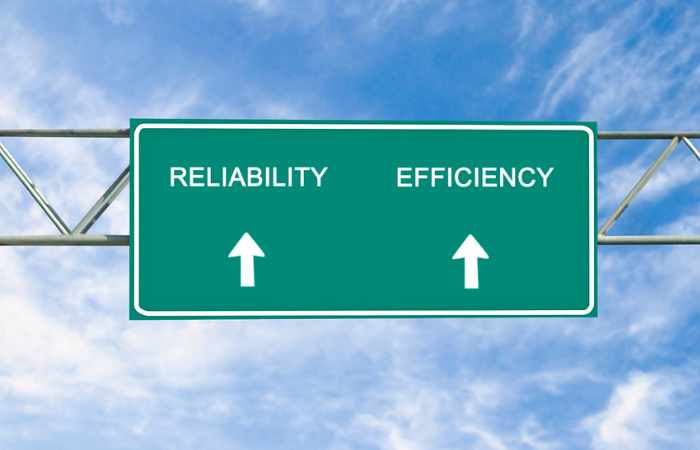
In this blog series, we’re diving into return-on-investment analyses for network mapping and data center infrastructure software. If network documentation and network mapping software can solve your pain points, then this blog and the previous one are for you. If you’re looking for savings in the Data Center, rack documentation, cabling, power and cooling and you were looking at netTerrain DCIM as a potential solution then parts 4 and 5 are better suited.
In part 2, we ran an analysis on the return-on-investment of how implementing network mapping software positively impacts two common IT problem areas: bad IT visibility and downtime. We discussed how network mapping software can yield a measurable returning investment year after year and explained how our software, netTerrain, can specifically help.
In this blog (part 3), we’ll run some actual calculations for our imaginary company, “Acme” — we’ll use downtime and bad IT visibility as the only opportunities for cost savings, Keep in mind that there are other areas in which an organization can benefit monetarily when implementing network documentation software, such as: improved service level agreements (SLAs), decreased costs in auditing, improved reputation due to better quality of service, decreased documentation costs, etc, but many of those are harder to measure.
For the calculations, we need to make some assumptions:
Assumption 1: Implementation
First, we need to assume that implementation will be successful. I know this sounds a little bit too obvious but it does require a certain amount of effort and commitment to get any network mapping software properly implemented and running.
How does a netTerrain project succeed?
At Graphical Networks, we assign a project manager to each project. As soon as the purchase order is received from a new customer, we start the onboarding process: installation and training is done quickly (the installation usually takes just a couple of hours). We then proceed with an agile data migration process from your existing data sources and synchronize catalog dashboards and reports right from day one — including customizing reports for you so that you get the exact insights you need (this service is provided for no extra charge as part of netTerrain’s maintenance package). The steady-state supervision —after onboarding — generally lasts for a couple of months with a project manager monitoring the successful implementation of the projects to make sure that our users are happy. The key to success is always adoption.
Assumption 2: Company Type
To estimate the return of investment, we also have to make some assumptions as to the type of company implementing the system — so, in this example, we’ll use a yearly IT cost as a percentage of Acme’s revenue (we’ll assume Acme’s a mid-sized company with $500 million in revenue).
Assumption 3: Current Inefficiency
Finally, we need to make an assumption about the company’s downtime and waste prior to implementing the project. We’ll assume a conservative figure to determine the costs of Acme’s downtime and IT waste.
With these parameters now established, we can go ahead with the ROI calculation so we can estimate a payment and the net savings per year.
1. Inefficiency calculation
Below, we’ll figure out the costs of inefficiency that Acme is incurring each year.
- For our IT inefficiency calculation, we’ll assume that Acme’s total IT budget per year represents 4% of the revenues.
- We’ll calculate Acme’s IT and efficiency percentage at 10% (which is about half of the average IT inefficiency estimated for large US companies by several analysts) and, for the downtime cost calculation, we will assume 40 hours of outages per year (which is less than half of the average for fortune 500 companies estimated by Gartner a few years ago).
- For the cost-per-outage, we’ll assume it’s $20,000 per hour (which is again half of the estimated North American average according to several studies).
Now, let’s plug in the numbers:
- The yearly IT inefficiency is equal to 10% of Acme’s budget which results in $1.5 Million wasted dollars per year.
- The downtime cost is 40 hours multiplied by $20K which equals $800K.
While these are just theoretical numbers for an imaginary company, bear in mind that we plugged in very conservative figures and the actual reduced cost from fewer inefficiencies and outages is likely far higher.
2. Savings calculation
Below, we’ll figure out the savings that Acme would see each year.
- For our savings, we’ll assign a mere 5% gain in IT utilization for a gain of $200,000 which is easily achievable by simply identifying a few dozen underutilized servers in what’s likely to be well over 1000 network devices and servers.
- Then, you’ve got the rack units which you may want to improve in areas such as density, cables, ports, power, and other IT elements and parameters that can be optimized. Easy-peasy.
- For our downtime, we’ll assume another conservative 20% improvements in mean-time-to-repair (MTTR) for a subtotal of $160K in savings per year. This is almost comically simple as that 20% can probably be achieved by simply having the proper network diagrams in place prior to troubleshooting — let alone the dynamic circuit layout records, dependency diagrams, and so on that a proper network documentation software can provide.
The total savings then comes down to $360K.
3. Software implementation cost calculation
Below, we’ll figure out the costs of the software.
Because implementing a network mapping software is, obviously, not free, we have to make more assumptions:
- First, there’s the license cost: for our sample company Acme, we’ll assume they need a large netTerrain Logical license of 20000 objects and 10 editors with the Outside Plant module added on.
- We’ll also assume $100K of yearly personnel costs to manage the documentation process although this cost can be debated: if anything, usually netTerrain brings personnel costs down, not up — but, just to be on the safe side, we will assume the organization decides to add another resource to work on the software part-time.
- Finally, we’ll add a generous $15K in additional third-party software and hardware costs for a total of $160K in yearly costs. In our experience, this is a vastly exaggerated number that would be more in line with a DCIM implementation.
When we compare the savings vs. the costs we can see that our imaginary company Acme (using numbers that are heavily biased towards a conservative estimate) will yield $120K in yearly savings in MTTR and IT asset optimization alone (and we’ve even assumed an extra resource that, in reality, is probably not needed). The repayment period in this example, then, is 15 months (including 6 idle months just for ramp-up time).
As you can see, network mapping software like netTerrain can bring a great deal of measurable savings to your organization. As I mentioned above, there are many other areas in which improvements in efficiency positively impact the bottom line (meeting SLAs, reduced auditing costs, improved reputation, decreased documentation costs, fewer consultants, faster onboarding, and much more), and, while these aren’t as easy to calculate as downtime and bad IT visibility, they should still be top-of-mind when considering ROI from a potential network mapping solution. Interested in learning how much ROI DCIM can deliver? Stay tuned for parts 4 and 5 in this ROI series.


